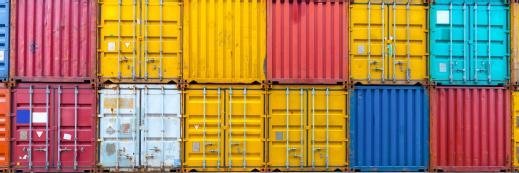
zhu difeng - Fotolia
Danish shipping company uses blockchain in IBM partnership
Maersk and IBM test out the application of blockchain technology to track and manage the paper trail of shipping containers around the world
IBM and Danish shipping giant Maersk are using blockchain technology to digitise transactions in the global shipping industry.
It is a huge market, with about 90% of the world’s trade carried by sea.
“Up until now, [shipping] supply chains have relied on the physical movement of paper documents, leaving the window open for fraud, human error and inadvertent delays,” said Ramesh Gopinath, vice-president, blockchain solutions and research at IBM Research.
The blockchain product that IBM and Maersk are developing could help to track and manage the paper trail of millions of shipping containers end to end. It will increase transparency and improve secure data sharing between trading partners.
The companies’ blockchain effort is based on Hyperledger Fabric, part of the Linux Foundation’s open source Hyperledger Project, and is scheduled to be ready for production in late 2017.
Blockchain, most commonly known for underpinning crypto currencies, is a digital distributed ledger capable of storing tamper-proof records of transaction data. Unlike traditional databases, it is based on a peer-to-peer architecture and stores data across a network of computers.
IBM and Maersk are applying blockchain to the shipping industry to enable transparent and real-time exchange of supply chain events and documents. Each participant in the trade can view the progress of goods through the supply chain – including the status of customs documents, bills and other data – but no one can modify or delete records without the consensus of others in the network.
Read more about the uses of blockchain
- Thousand-year-old organisation the Royal Mint is the latest financial services business to harness blockchain technology.
- Abu Dhabi Securities Exchange offers controlled access to the AGM information of listed companies through a blockchain-based service.
- As blockchain technology becomes more established in the financial arena, federal health IT officials, suppliers and developers are looking at its use in healthcare.
The two companies believe digitising the current paper-heavy processes will help reduce fraud, cut transit time, improve efficiency in border inspections and save documentation and processing costs.
But they have their work cut out. A proof-of-concept run by the two companies in September 2016 tracked a shipment of flowers from the coast of Kenya to the Port of Rotterdam and found paperwork could account for up to 15% of the cargo’s value. Also, Maersk has calculated that one shipment from East Africa to Europe can go through nearly 30 people and organisations and include 200 interactions.
“The supply chain model of the container industry hasn’t seen much, if any, real innovation since the advent of the container,” said Gopinath.
IBM and Maersk intend to work with shippers, freight forwarders, ocean carriers, ports and customs authorities to develop the trade digitisation product. It has already been used in pilot in February, when Schneider Electric goods were shipped from Rotterdam to Newark in the US. The collaborative pilot was conducted as part of a European Union (EU) research project and several US customs authorities and agencies took part.
IBM believes blockchain technology, if adopted at scale, could save the shipping industry billions. But Gopinath acknowledges that it will be a long journey to achieve this.
“We do expect that the new solution can manage and track millions of shipping containers by the end of the year, providing an unprecedented level of transparency and trust that will help minimise fraud and errors,“ he said. “However, making these advantages available to the global shipping community will require a multi-year commitment to onboarding more partners to use the system.”








